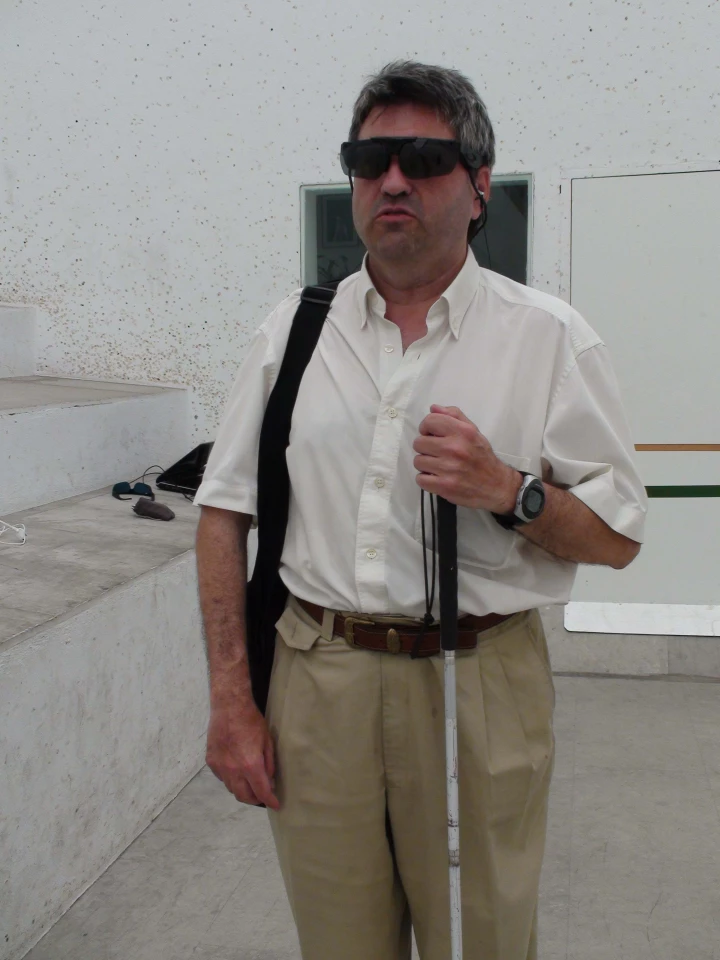Engineers from the Research Center for Graphic Technologies at Spain's Universitat Politècnica de València (UPV) have created an experimental system, that allows the blind to be aware of their surroundings through the use of sound. Called EYE 21, it consists of a pair of sunglasses with two built-in micro video cameras, a computer, and a pair of headphones. It's similar to sonar systems that have been used to achieve the same goal.
The two cameras are able to analyze the space in front of them, creating a three-dimensional model of it. Sounds are assigned to the various surfaces in that space, and are played back through the headphones. By listening to this mosaic of sounds, blind users are reportedly able to "hear space," with their brains turning the sounds into shapes.

A somewhat similar approach is used in Virginia Tech's AirPix system, that creates a tactile representation of a blind driver's surroundings, which they can feel by holding their hand over a matrix of small holes that are blowing pressurized air.
There are presently four EYE 21 prototypes, with ten more set for testing. The UPV technology was developed as part of the Cognitive Aid System for Blind People (CASBLiP) project.






